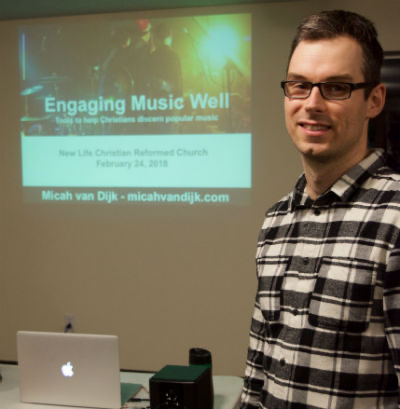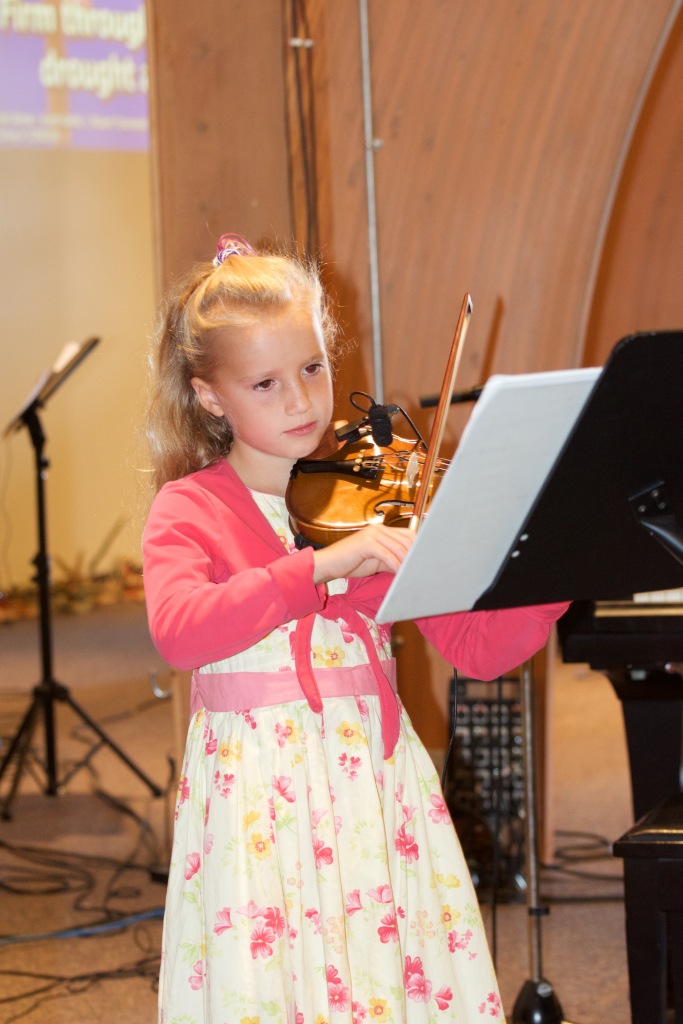This now updated article first appeared in the Christian Courier on April 23, 2018, which you can see here. Recent disappointing events have prompted me to offer it for the first time on my blog but with some shift in my take on it. It has been edited by me. For news on the scandals with Brian Huston’s dad and with Carl Lentz you can press the hyperlinks. The FX series “The Secrets of Hillsong” suggests the scandals are just the surface of a deeper and more dysfunctional institutional culture. Houston himself says in 2022: “it seemed like all hell had broken loose within Hillsong church.” Nine of the 16 U.S. Hillsong churches have cut ties with the organization since March 2022 (NY Times). In this article I focus on the music and how it is heard and used, and I find myself asking now: how does the music and its theology link with the abuse that seems systemic? They can’t be totally compartmentalized. This is something that needs further exploration.
Let me add: the day I posted this blog I was playing guitar for Sunday worship in my local church. One of the songs was Hillsong’s “Oceans.” We all hold contradictions within us.
Hillsong United won a Grammy award the end of January 2018 for “best contemporary Christian music song.” At the same time a sociologist colleague, Gerardo Marti, published an article on the “Hillsongization of Christianity.” Why is this church and its music so wildly popular around the globe? Sure, there are other popular worship bands: Bethel, Elevation, Jesus Culture, Rend Collective. But Hillsong is said to have about 100,000 adherents in 15 countries on five continents. Their music is sung by an estimated 50 million people in 60 languages (with campuses in places like Amsterdam, Barcelona, Berlin, Cape Town, Tokyo, Moscow, Copenhagen, Kiev, London, NY, Paris and Stockholm). “Oceans,” one of their most well-known songs, has over 90 million views on YouTube.
With a global network of congregations, they are their own industry of worship, blurring secular and sacred, marketing and mission, performance and praise. Hillsong is a music industry: a publishing house, a leadership network, a big screen movie and a TV station. “An impressive ecclesial force, a global phenomenon,” says Dr. Marti, “among those big-footprint congregations that become an exemplar and influencer . . . defining a way of doing ‘church’ many believe is necessary for the world today.”

Significantly for some people, Canadian pop star Justin Bieber himself was baptized at the New York Hillsong congregation. It is a church shaped for celebrity. I was listening to episode #147 on recent leadership failures on the podcast You Have Permission. They said the sins of Bruxy Cavey were shocking and deeply disappointing. Perhaps not pre-determined. But the scandals at Hillsong seemed likely, and to some people, completely expected. There is something about the prosperity theology, the constant cavorting with celebrity, and the vast amounts of money involved in their music production that seemed to prime them for such corruption. You play by the celebrity and prosperity game, you get all that comes with it, including the scandals.
If you want to know about its prosperity theology background, see pastor Brian Huston’s book You Need More Money. I doubt the thousands of churches that sing Hillsong’s trademark music know about this history. I doubt they even care. Most churches just like the contemporary tunes and the elevated sensations that come with it, hoping that it is hip enough to keep the youth interested in the old, old story.
The Vision of Hillsong
Let’s look into the music.
Musical discernment involves assessing bands in part by what they say they intend to do. Hillsong Worship explicitly states that their “purpose is to champion passionate and genuine worship of our Lord Jesus Christ in local churches right across the globe.” Hillsong United, focused more on youth and outreach, intends to “awaken churches and individuals to the fact that we are redeemed and called into the story of God.”

One Hillsong band member I was referred to through a friend further explains: “As a musician we worked as a team to write parts that could be played on as minimalistic musical setup [gear] as possible, with the least amount of skill. With the dawn of digital tracks, we aim to make these more accessible to churches so that even worship teams with a Tuba player, an accordion and a keyboard player can still generate a similar sonic atmosphere in their congregation . . . . We care little about what is trendy. . . We are just trying to capture the sound of heaven – whatever that may be.”
He was insistent that celebrity played no part in the music and that the single concern was this: Does it work for the local church? But can a local church reproduce the scale and atmosphere generated by Hillsong? Is a multi-generational church put under pressure to sound or feel like Hillsong? Can you sing Hillsong if you just have a piano in your little church?
That completely ignores other questions like, What about the money? Follow the money to see the true vision of a church, and for Hillsong, the numbers are too big to be healthy. Scale, throughout the history of the church, has proven to be a spiritual liability.
What draws people to Hillsong?
Full disclosure: I play guitar in one of our church worship bands. Sometimes, the leader picks a Hillsong number, and I play along (no dry ice). I play many songs I would not have chosen myself, because our church is bigger than me, and God works in ways I wouldn’t imagine.
Let’s see how people interpret Hillsong at home.
One female college instructor uses Hillsong for personal worship: “I love how their songs bring me to my knees before God.” She listens on YouTube and has Hillsong playing while she prepares for classes or cleans. “I love watching my kids stop what they are doing and dance around the living room and belt out the words to the songs.”
An older engineer goes to Hillsong for relief from his work. “It draws me in and takes me away from and out of my pressure cooker mind full of work-related thoughts and pressures, and via the relatively complicated music, takes me into simple but profound words that help me focus on what I should be focusing on all the time – namely something to do with God’s goodness and kindness.”
A middle-aged Oxford PhD student finds personal meaning and encouragement in Hillsong’s music. “At the time that I heard the song ‘Seasons,’ I was wrestling with a lot of anxiety and discouragement about my academic journey, and a fear that my time at Oxford would be the end of it all. The song’s lyrics seemed quite timely regarding God’s larger plan . . . the lyrics themselves connect with, and speak into, my personal experience and the song itself becomes part of an ongoing conversation with God about my life.”
Hillsong nurtures awe: “I want to be part of something bigger than myself,” said a 29-year-old female in a NY Times article on the church. “We’re going to love the city, love the people, and, to me, I feel like love can break any walls.” That’s quite a promising vision. Note the recurring emphasis on matters of scale. Hillsong is big.
There are layers to the Hillsong industry and production and consumption ends deserve a different discerning posture. Note, however, none of these testimonies of God’s presence referred to the local church. Only Hillsong – live or online.
Writers describe the movement
NY Times Michael Paulson summarizes the Hillsong experience: “For young Christians in cities, it has become a magnet, combining the production values of a rock concert, the energy of a nightclub and the community of a megachurch.”
Dr. Marti adds: “Hillsong represents a compelling musical pathway to an emotional one-on-one connection to God . . . embracing a more therapeutic emphasis on emotional well-being. Worship is a guided, event-focused, corporate effort attached to a promise of immediacy to an intimate God, a God whose Spirit-filling empowerment energizes even the most mundane activities of work and family in everyday life.”
Marti characterizes Hillsong’s message as positive, emphasizing victory, like a power ballad, a war cry. “This is a faith that does not bring you down; it lifts you up. And it is always there for you. “Hillsongization” is the replication of this feeling, combined with the cosmopolitan flair and the minimalist musical and architectural approach. It is a band, but it’s also a brand.
What critics say
Hillsong, especially on its home territory in Australia, has no shortage of critics. Some insist the church is more a corporation bent on marketing, management and money. Its history with the prosperity gospel worries some people, although their music has shifted to become more mainstream evangelical over the decades. Charismatic emphases on the Spirit have become broadened to more Trinitarian themes.
Victor McQuade has been a keyboardist in worship for 52 years, and was head of a music department in a Bible College and edited a hymnal for the French Canadian church. His vision has been to teach worship leaders how to choose songs that were “singable” for the congregation, regardless of style. His critique of Hillsong music is that it is best for the concert venue. “If you do not have the lights, fog machines and pretty girls for your front singers, then it is hard to duplicate in a church setting.” In other words, Hillsongization is a mismatch for most congregations.
“The reality is that many are ignoring the reality by not paying attention to the congregation while they are singing,” says McQuade. “If you are on stage with your eyes closed and your ears plugged into in-ear monitors, you cannot connect with the very people you are supposed to be ministering to.”

Photos from Jacob Bentzinger on Unsplash.
Yet no worship service is all Hillsong, except at Hillsong. Hillsong turns itself back onto Hillsong. Adam Perez studied Hillsong music for his graduate degree and he’s now studying worship music at Duke University. He emphasized that most churches have one Hillsong piece, maybe two in a service, and there is always other music to diversify the experience and contextualize the Hillsong message. Scripture, prayers and sermons all shape how Hillsong is experienced.
A number of people have mentioned to me their concern that the music is emotionally manipulative. Said one older Christian Reformed gentleman: “I am personally always nervous to be involved in a church service where emotion runs high and I feel that some people are out of control. I can’t escape the thought that I am being manipulated somehow.”
Christian music scholar Jeremy Begbie has written, in a chapter entitled “Faithful Feelings,” that “Many are instinctively cautious about songs that span emotional extremes, exuberant bodily expression. The fear is that we will lose touch with reality, become too preoccupied with the body, open ourselves to unscrupulous manipulation by church leaders . . . bodily movement should be kept to a minimum; songs should be concerned with intellectually graspable truth, only secondarily (if at all) with moving us.”
His larger point has to do with the kind of emotions the music nurtures in us. “Perhaps the most worrying tendency today is to use music with a very limited range of emotionally significant qualities, or music that cannot specify anything but the most broad and basic emotions – in short, music that can never help to educate congregations as to the enormous range of emotion possible in worship (a range reflecting the width found, for instance, in Scripture).”
Losing control to God’s Spirit is one thing; but not to a brand. One way to gauge the genre is to ask: does it help me express sadness and anger as well as joy and praise? That will give you an indication of the music’s emotional and spiritual range.
Back to the Scandals
Speaking of anger and sadness, I want to get back to the problems that seem to plague celebrity-centred churches, and particularly name again the scandals that have surfaced (again) at Hillsong. I’ve written elsewhere about local and far away scandals in megachurch settings, and I’m less and less sure that a healthy spirituality can be nurtured–especially for the leaders–in a religious community that is so big its pastors relate to parishioners through screens and on-line videos. Even if some individuals benefit spiritually, that doesn’t make the model one to be commended. Neither does that make the music good.
What about making your own worship music, or singing the songs of local friends? Glen Soderholm lives here in my town, and we sing songs he wrote. They are theologically deep and musically beautiful. Calvin Seerveld and Bert Witvoet are older friends who have written songs in my denomination’s Psalter Hymnal. Sadly, we never sing them because we are too focused on the music of big names like Hillsong. The question is not: Can Hillsong be redeemed? but rather: Are there better songs to be singing?
The answer for both is yes, the the second question does not get asked much.
Is Bigger Always Better?
Hillsong is a megachurch with branch plants around the world. Singapore professor Robbie Goh says Hillsong offers a “semiotics of largeness” and “greatness” that stands above others. Their marketing foregrounds size, the massive body of the church, their large-scale operations, rapid growth, vast outreach, global sales and influence that is reaching millions worldwide. Preachers on a sprawling stage are magnified on jumbo screens with jumbo amplification: a largeness of personality, creating big expectations, supernatural promises. “God says you can do so much more,” is the refrain, “breaking out on the left and right.”
It’s a message of upward mobility.
Big isn’t always better, but big is not always worse, either. Theologians Kenda Creasy Dean and Ron Foster argue in their book Godbearing Life: The Art of Soul Tending for Youth Ministry (1998): “Worship with and for youth requires creativity, fun, and occasionally downright rowdiness in volume, playfulness and style. Sometimes worship should be a high-voltage experience, tapping into the energy that youth bring to the table. At other times, worship calls for silence and stillness, an atmosphere of holy hush. But no matter what form it takes, transformative worship with youth always must be awe-full . . . Plan for worship that keeps youth awake (in the very best sense of that word), that inculcates a sense of awe and wonder.”
Hillsong has a place in our culture of spectacles, and it speaks to millions of people, including hordes of young people from many different cultures. Does the reach justify the rest?
Adam Perez cautioned the critics, saying “We should think first and foremost about the hospitality of receiving gifts of music from persons and places with whom we have theological differences – even if those gifts are offered to us through industrial market forces. I’d err on the side of solidarity and ecumenism in music sharing.”
In other words, let’s not be stingy in our worship music choices. And maybe singing Hillsong, which is from Australia, will inspire us to sing the songs of people from other places closer by – brothers and sisters with whom we have some theological or missional relationship. Who do we want to align with in our worship? How can we better demonstrate our worship as “one multi-coloured church of God?”
Micah Van Dijk, shown here at New Life Church in Guelph, Ontario in 2018, leads workshops on discerning contemporary music, from Drake to Hillsong.
Do we think about our worship music enough?

Partners with the Spirit?
A campus ministry couple from B.C. told me this story.
One of the university staff members was worried about her 14-year-old son. He had attended a youth group function at a local megachurch, and she wondered how weird, cult-like and dangerous the group might be. The campus minister reassured her and suggested that she show up at a church service and observe.
So she did. She came back feeling basically reassured – and impressed with the music, “because it’s all positive and upbeat. Nothing at all like the stuff my son has been listening to.”
In fact, much of the music was Hillsong, and so the staff member checked out Hillsong on YouTube. She was terribly impressed that none of the musicians tried to be “sexy.” She loved their energy and enthusiasm. Gradually she started attending the church and eventually started thinking about the things that were said in the songs, sermons and prayers and made a personal commitment to Christ.
The campus minister ended her story by saying: “It all began out of a general sense that Hillsong music is positive and not sexy. Go figure.”
I began this investigation hesitant about Hillsong, and I still discern that other music may come from a healthier place more tuned to local ministry and meaningful global exchanges that turn to solidarity with the poor, for example. Can cautious use of megachurch music still capture a heavenly chord? As the scandals accumulate, I am increasingly skeptical. There are many alternatives today that can lift your heart and soul without the extra baggage. Why not try something different?


Very interesting read, how much value do we put in the singers background before we worship is the biggest question from this article.
LikeLike